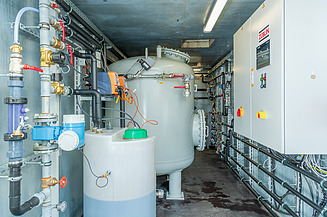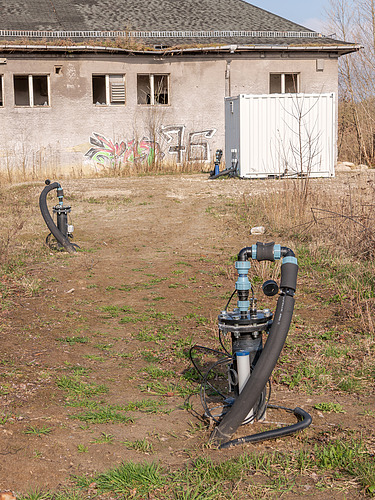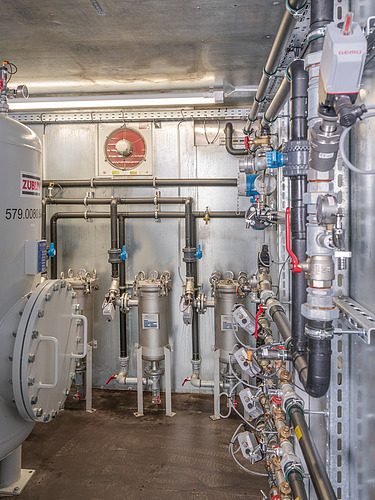ISBR: ENA measure, Krampnitz barracks

- 9 infiltration wells with a flow rate of up to 0.4 m³/h each
- Oxygen content in infiltration water < 0.5 mg/l
Groundwater damage was detected on the site of a former laundry with an associated dry cleaning facility as a result of contamination by the pollutant trichloroethene (TCE). To remediate the damage, in-situ stimulation of the microbial degradation of CHCs is carried out. For this purpose, molasses is added as a readily available carbon source to stimulate the reductive dechlorination of trichloroethene via the intermediate products dichloroethene and vinyl chloride to the end product ethene. The aim is to completely eliminate the chlorinated hydrocarbons and restore groundwater quality.
Special features
- Bioreactor for the consumption of dissolved oxygen in the infiltration water.
- Gravel filter and bag filter connected in parallel to minimize biomass discharge.
- Fully automated and remote access
- Individual adjustment of the infiltration rates of each well
- Volumetric flow proportional dosing of molasses
Scope of services
- Construction of approx. 300 m of pipeline trenches and laying of corresponding pipelines, power and control lines
- Equipping and connecting 9 infiltration wells
- Construction and operation of the ENA plant Analytical self-monitoring

